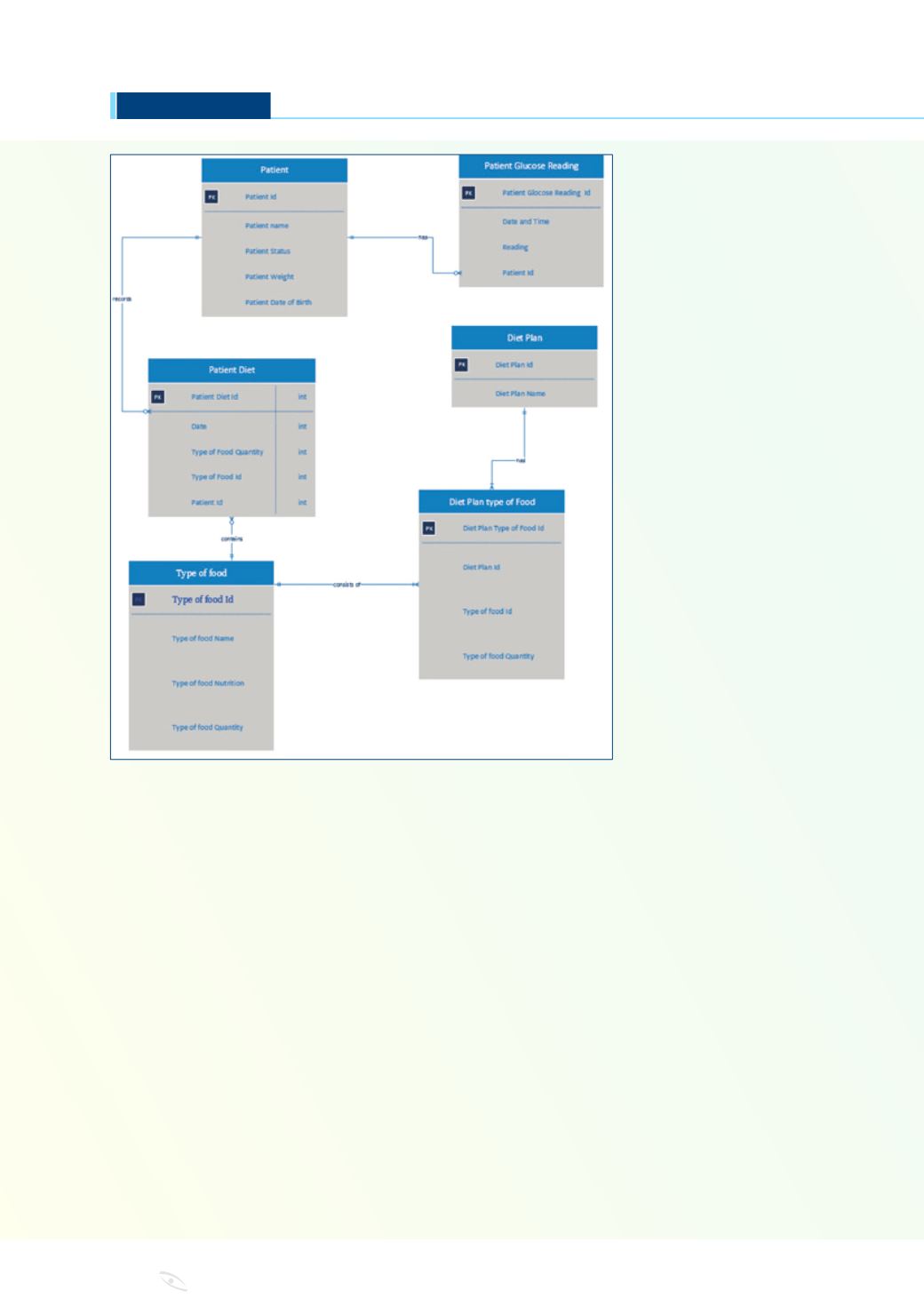
66
magazine
ALRAQABA
Studies
tion should provide them with the ability to man-
age their diet plans as well as tracking or moni-
toring their blood sugar levels. Users should be
able to use the application whenever they want
without the need to visit the clinic. Moreover, the
application should enable them to record their
blood sugar levels and inform the doctors about
it immediately.
3.4. Software Architecture
Software architecture is also an important factor
to be decided; the project management will be
the one managing the architecture. Following are
the main architectural components:
3.4.1 Service Oriented Architecture
The next diagram
3
shows the proposed struc-
ture of the Application Architecture.
Browser:
The application program like Mozilla
Firefox, Internet Explorer, or Google Chrome etc.
Mobile application: The custom-made applica-
tion for mobile phones, like applications from
Apple Store or Google Play
Store.
Web server: The application
server that hosts our source
code files and provides ac-
cess to the application.
Hardware devices:
Devic-
es such as blood glucose
monitors and blood pres-
sure monitors. Web services
modules: The application
block that serves as a sepa-
rate function, exposed to
the other components as a
web service.
Desktop systems:
Applica-
tions that run on computers
systems, like windows ap-
plication, MS Word etc.
The users, through two plat-
forms, will use the applica-
tion; Web based applica-
tions will be used through a
browser, and the mobile ap-
plication by the patients.
The browser-based appli-
cation will provide functions
for doctors and patients; the
mobilebased application will
provide patients with the func-
tionality to record their diet information and get
their diet plan information from the system.
The hardware devices will communicate directly
with the web server which will receive the rel-
evant data and store it through web service.
The study of the design was adapted from the
following papers. However, it was addressed ac-
cording to the project’s requirements.
• Improving Performance of Healthcare Systems
with Service Oriented Architecture (Infoq.com,
2014).
• The Information Technology Forum: Techni-
cal Interoperability of Disparate Systems - An
Electronic Health Record (EHR)-Centric System
Implemented with Service-Oriented Architecture
(Information-technology-forum.blogspot.com,
2009).
4. Conclusion
The project has provided comprehensive details
Figure-2


